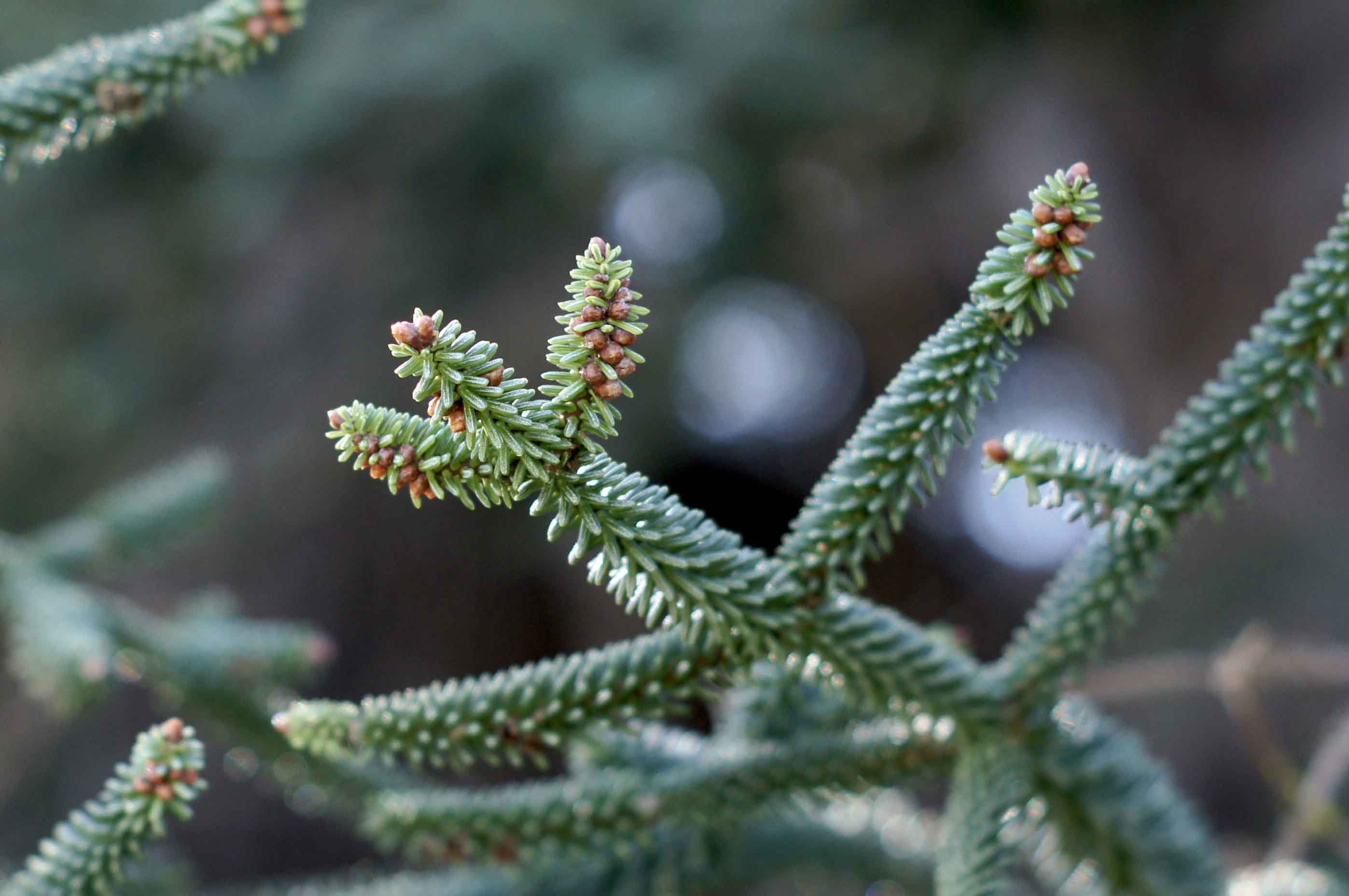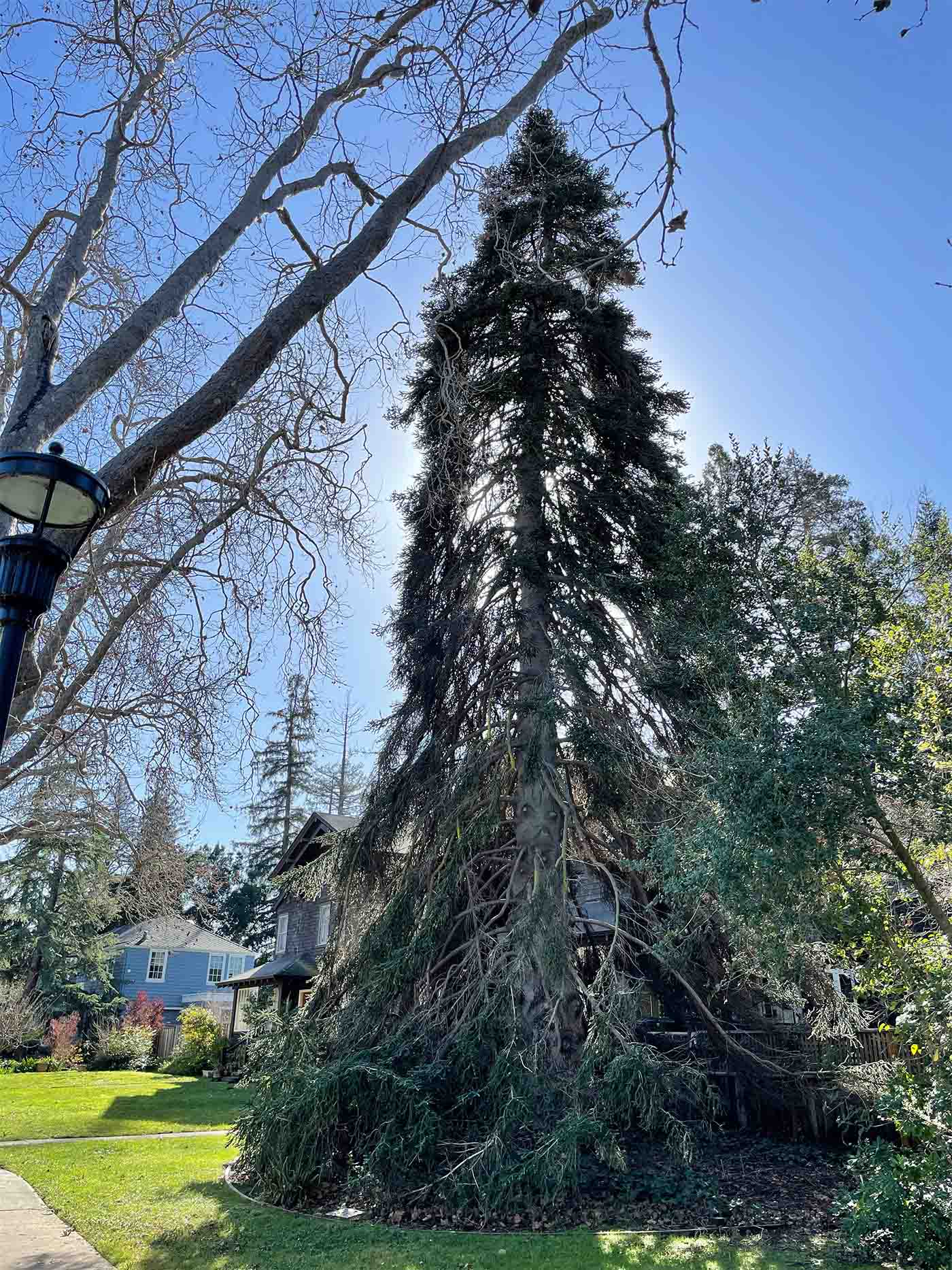Abies pinsapo
 Spanish fir
Spanish fir
A very pleasing tree indeed with plump stiff blunt leaves arranged like a bottlebrush. It is impossible to resist stroking the foliage. A well known and noble example is at 634 Alvarado Row. There is a memorable specimen in Frost Amphitheater, which was planned in 1937 by comptroller Almon E. Roth (1886–1964) with Leland Stanford’s arboretum concept clearly in mind. It is located on the slope near the west side of the stage. In Palo Alto, Spanish fir can be seen at 745 Cowper Street and 815 Melville Avenue.
The word “fir” in English is cognate with tree names in various Northern European languages (e.g. German Föhre) and since the genus Abies did not extend to Northern Europe the word fir in English literature does not necessarily imply Abies as specified by Linnaeus. Scotch fir, for example, belongs to Pinus, not to Abies. What fir meant to King James is open to discussion; his translators used the word to render the Hebrew brosh, which today means cypress. The Latin abies is similarly of obscure denotation. Before Linnaeus introduced the binomial system, abies, pinus and quercus were common names, used as the locals pleased. In fact fir and quercus are themselves related (as are four and quattuor).
Name derivation: Abies – Latin name for fir; pinsapo – possible short for soap-fir because crushed needles in water produce a soapy substance.

About this Entry: The main text of this entry is from the book Trees of Stanford and Environs, by Ronald Bracewell, published 2005. Mention of Meyer Library updated to Meyer Green (Oct 2017, SP). Palo Alto’s Cowper and Melville locations added, location at lawn opposite 112 Kingsley Avenue near Embarcadero Road underpass removed; all locations (except Frost Amphitheater’s) up to date (Jan 2023, SP). Native range corrected (May 2023, SP).





